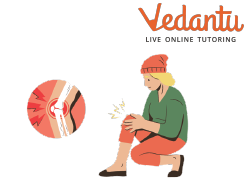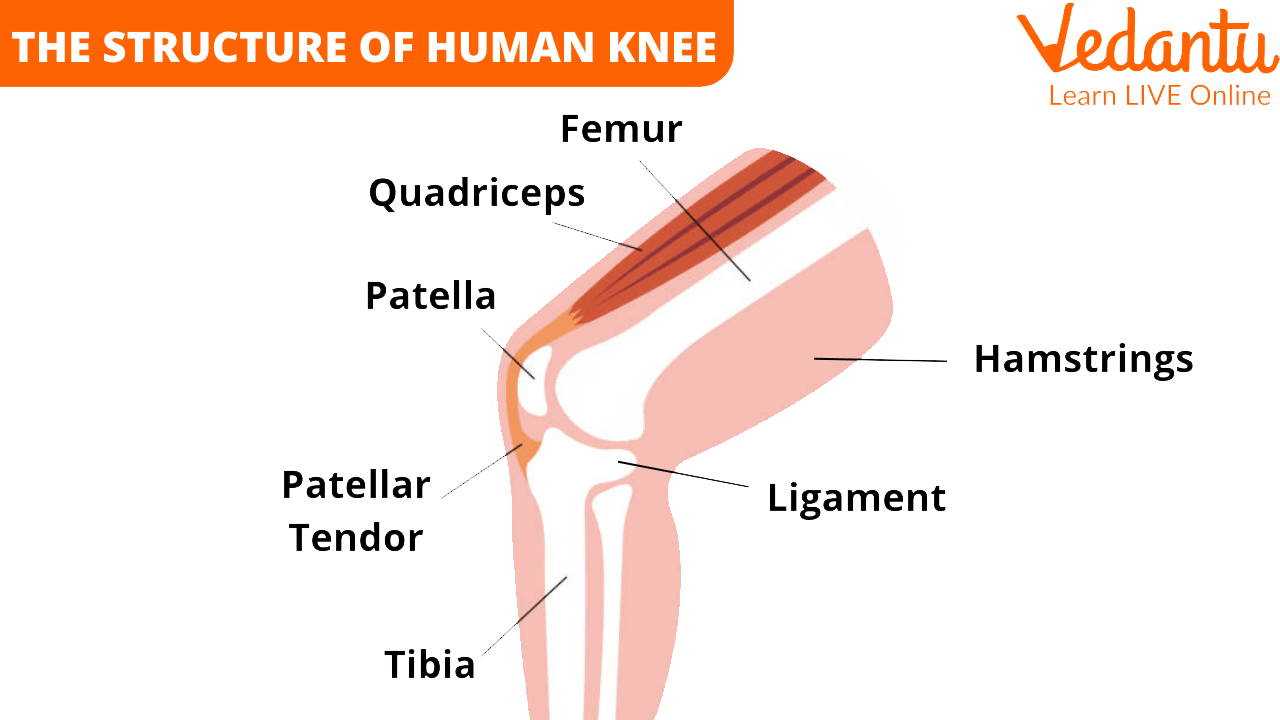




The Structure and Function of the Human Knee Bone
The human knee bone is a joint located midway between our legs. The knee bone is located between two major bones in the human body. This joint is the connecting point for many muscles that help us move, walk, and run. Let us understand more about the human knee and its structure.
The Human Knee Bone
The human knee is the largest joint in the body. What is a joint? A joint is the meeting point of two bones. You can fold your leg or straighten your leg only because of it. The knee helps support the body's weight.

Knee
The Structure of the Human Knee

Diagram of the Knee
Now that you have learnt about the knee let us understand the human knee structure. The knee joint is formed by joining two large bones of the leg: the femur and tibia. The ligaments are strong strands of tissue in every joint and connect one bone to another. So, the femur and tibia are connected due to ligaments.
To prevent friction in the joint due to rubbing against each other, there is a cushion-like tissue called the cartilage cushions at the ends of each bone. The femur is protected from the front by a small patella bone. This is the same roundish bone you can see when you fold your legs. The patella is also known as the kneecap, which sits on the knee like a cap.
A large group of muscles are joined together at the knee. These muscles help in straightening the leg.
How Does the Knee Work?
Let us understand how the knee joint acts like the hinges of a door, which is why it is called a hinge joint. But this joint can also rotate slightly. The contraction or the squeezing of the muscles in the front of the thigh causes the leg to straighten, and the contraction of the muscles in the back of the thigh helps us bend the knee.
When the muscles contract, they pull the tendons connected to them. This, in turn, pulls the kneecap, thereby extending the knee. When the leg is bent, the hamstring muscles, which are present in the back of the thighs, pull the tibia bone backwards. Injury to these muscles can sometimes affect the movement of the legs too. The human knee joints of kids differ from adults as the kids' knees are much more flexible than adults' due to slight differences in chemical composition.
Functions of the Knee
The functions of the knee are as follows:
The knee joint is one of the essential parts of the human body as it helps in motion. It allows a person to move from one place to another.
The knee is also responsible for bearing the body's weight while we stand, run, walk, etc. This is why our knees are essential and must be taken care of.
The knees also help us to fold our legs and sit in a cross-legged posture.
Facts Related to the Knee
Every person has a unique kneecap.
The knees of a human being are one of the most used joints.
The knees are dependent on 10 muscles for their functioning.
Wearing uncomfortable shoes can cause damage to the knees.
Babies are born without a kneecap.
Conclusion
In this article, we have learnt about the knee joint in humans, its functions, the anatomy or structure of the knee, the workings of the knee, and the facts related to the knee. We have also learnt about the various structures related to the knee, such as muscles, tendons, and cartilage.
FAQs on The Function of the Knee
1. What are the most common problems related to the knee?
The most common problems related to the knee include osteoarthritis, gout, and septic arthritis. Osteoarthritis occurs when the knee's wear and tear occur due to cartilage deterioration. Gout occurs when uric acid crystallises in the joints. Septic arthritis can cause damage to knee cartilage as it is often accompanied by fever.
2. What is the fluid present between the knee bones called?
The fluid present between the knee bones is called synovial fluid. The synovial fluid is a thick fluid located between all the joints. Along with the cartilage, synovial fluid is essential in providing a cushioning effect as it prevents friction between two bones connected by a joint.
3. What is a hinge joint?
Hinge joints are the types of joints that allow movement in only one direction in a back-and-forth motion. This joint resembles the hinge of a door, which allows motion in only one direction. There are many hinge joints in the body, and the knee joint is one of them.









